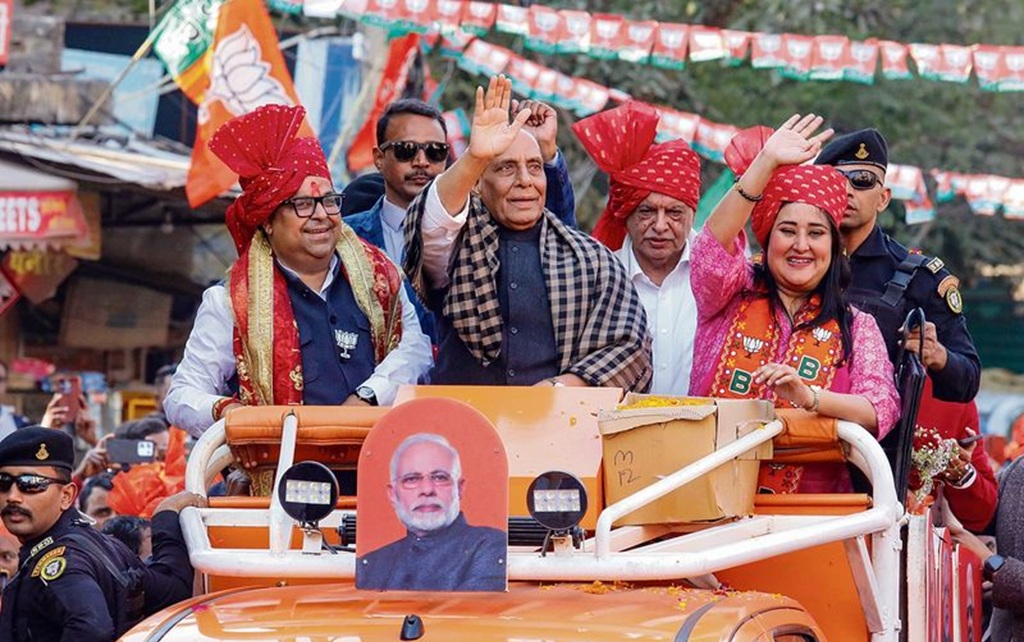Election News
India’s Bharatiya Janata Party Leads in 2025 Delhi Election

Prime Minister Narendra Modi’s Bharatiya Janata Party (BJP) aims to reclaim power in Delhi after a 27-year gap as vote counting begins. Exit polls from Wednesday’s election suggest the BJP could secure an outright majority.
The Bharatiya Janata Party is slated to potentially win over 35 seats in the 70-member assembly. According to data from the Election Commission of India, more than 60% of eligible voters participated in the 2025 Delhi election.
Due to the city’s symbolic role as the nation’s capital, the fight for Delhi carries significant weight for both major players—the BJP and the Aam Aadmi Party (AAP).
Delhi, a federally administered territory, has been under AAP’s rule since 2013. The party has built a reputation for welfare-driven policies, but recent accusations of corruption, which AAP has denied, have cast a shadow over its achievements.
For the Bharatiya Janata Party, gaining control of Delhi would be more than a political victory—it would establish a strong presence in the heart of India.
The Bharatiya Janata Party, buoyed by recent wins in states like Maharashtra and Chhattisgarh, has poured significant effort into its Delhi campaign. Key figures, including Modi and Home Minister Amit Shah, have actively campaigned.
Meanwhile, exit polls indicate fewer than 35 seats for the AAP, raising questions about its ability to retain power.
Corruption in Delhi
The Congress party, the main opposition at the national level, is also in the running but is expected to perform poorly. Once dominant in Delhi from 1998 to 2013, Congress lost its footing amid corruption allegations, which allowed AAP to rise. It has struggled to regain relevance since.
However, experts caution that exit polls, often conducted by surveying voters as they leave polling stations, are not always accurate and can sometimes be biased.
Key responsibilities like public order, policing, and land management fall under the federal government’s appointed lieutenant governor (LG), while Delhi’s state assembly oversees education, health, and public services.
This division has historically created tension between the federal government and the local legislature, especially when opposing parties are in charge.
This governance structure has shifted campaign priorities in Delhi towards welfare initiatives, unlike other regions where identity and political issues dominate elections.
The AAP and BJP have campaigned on promises to improve public schools, expand free healthcare services, and financially support women. The BJP has also counted on goodwill from the recent federal budget, which included tax cuts for the middle class—a key voter base in Delhi.
Bharatiya Janata Party Anti-Corruption Pledge
Experts say while the exit polls aren’t definitive, they highlight Modi’s enduring popularity despite the BJP losing its majority in last year’s general election.
Much of the Bharatiya Janata Party’s campaign focused on AAP leader Arvind Kejriwal, an anti-corruption advocate who faced jail time last year over allegations tied to a now-cancelled alcohol policy.
Kejriwal, who denies the charges and was released on bail in September, has accused the BJP of targeting him and his party for political reasons—a claim the BJP rejects.
Kejriwal is barred from entering the chief minister’s office or signing documents as part of his bail conditions. He resigned shortly after his release, and there’s uncertainty about whether he can resume his role.
Despite weeks of heated campaigning, one pressing issue—Delhi’s persistent air pollution—remained largely ignored by all major parties. The city of over 30 million regularly battles hazardous air quality, yet it failed to make it into the leaders’ agendas or manifestos this election season.
About Delhi Elections
Delhi elections draw attention not just locally but across the country. They decide who governs India’s capital, an area with complex needs and over 20 million residents. Key issues often include education, healthcare, public transport, and air pollution.
Voter turnout plays a critical role, as elections in Delhi can be quite competitive. Major political parties like Aam Aadmi Party (AAP), Bharatiya Janata Party (BJP), and Indian National Congress usually dominate the race.
Policies and promises are closely analysed, with voters keeping a keen eye on past performance. These elections often set the tone for broader political trends across India.










































